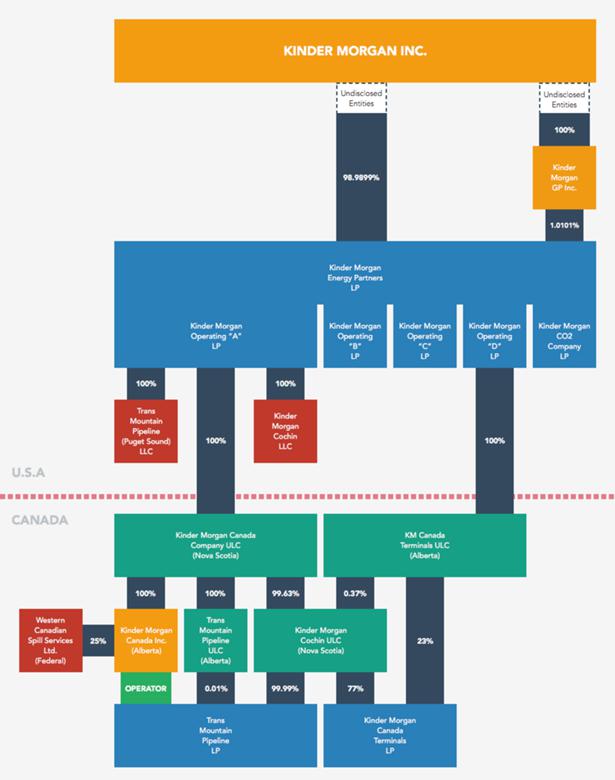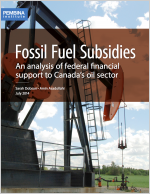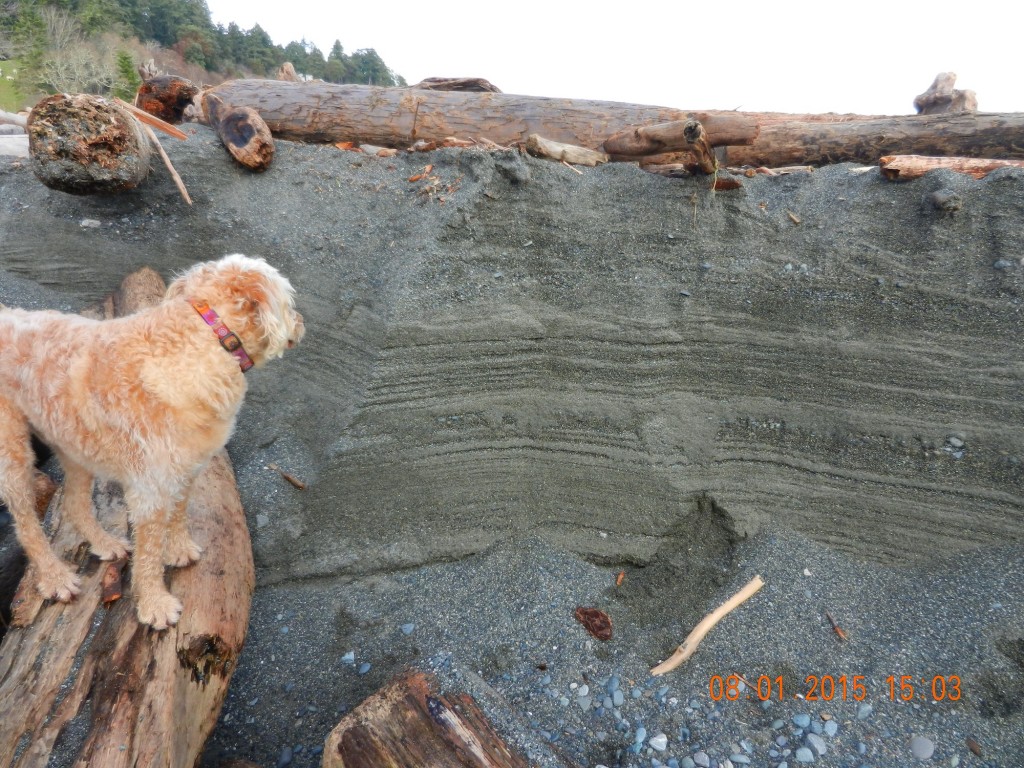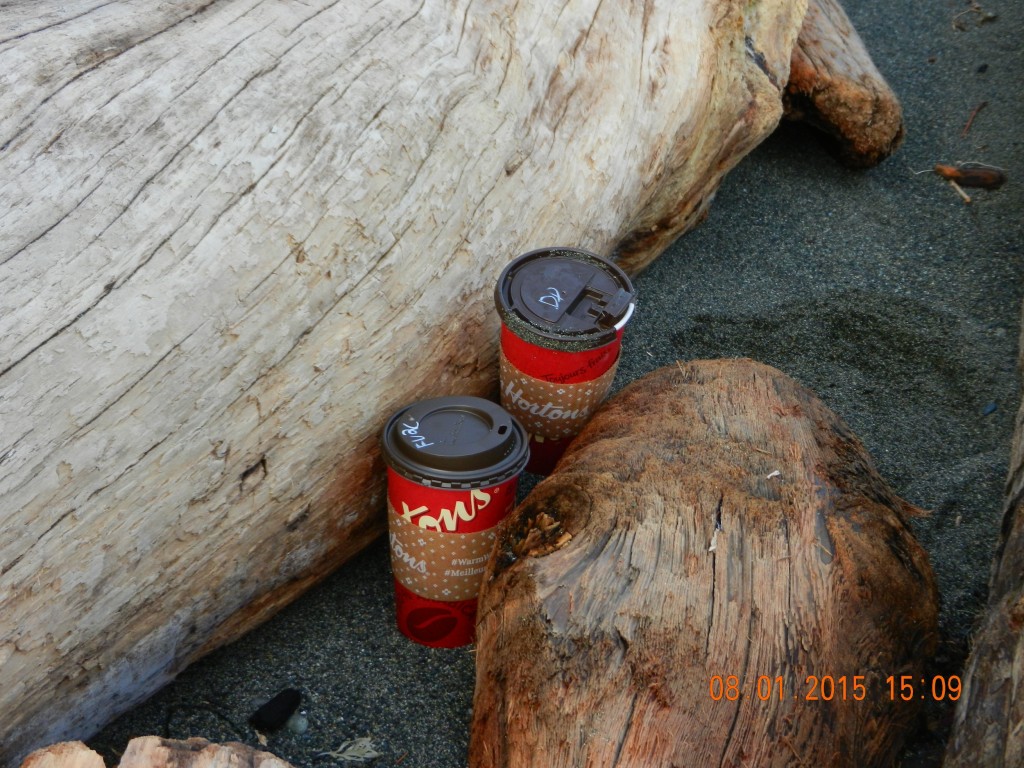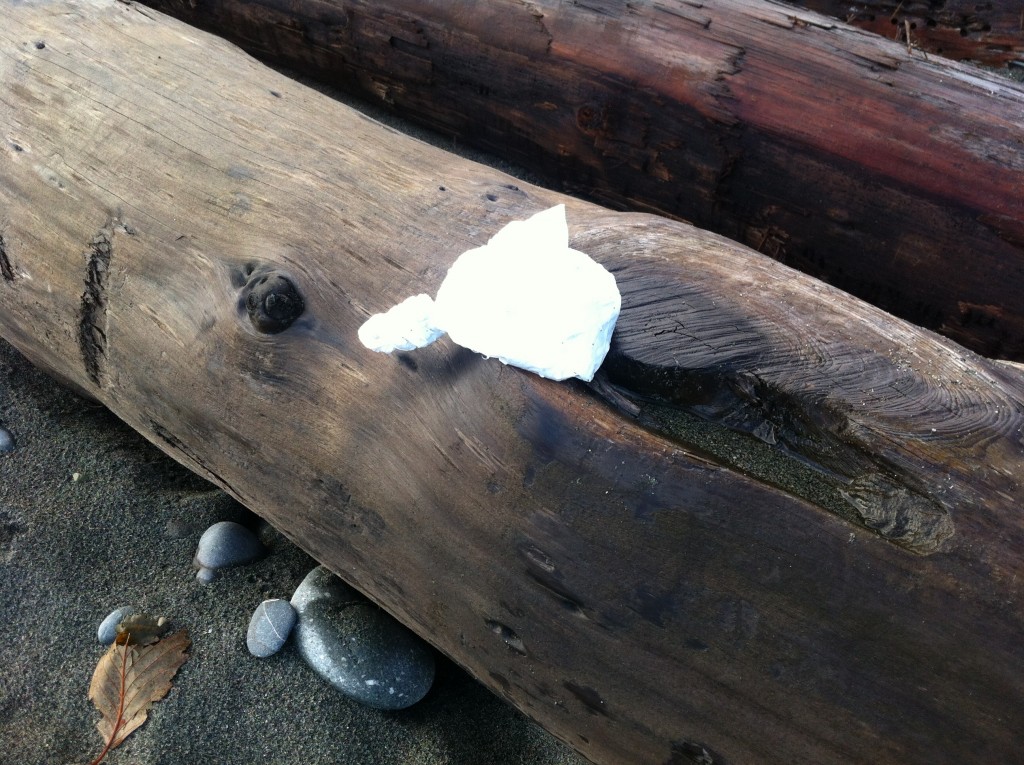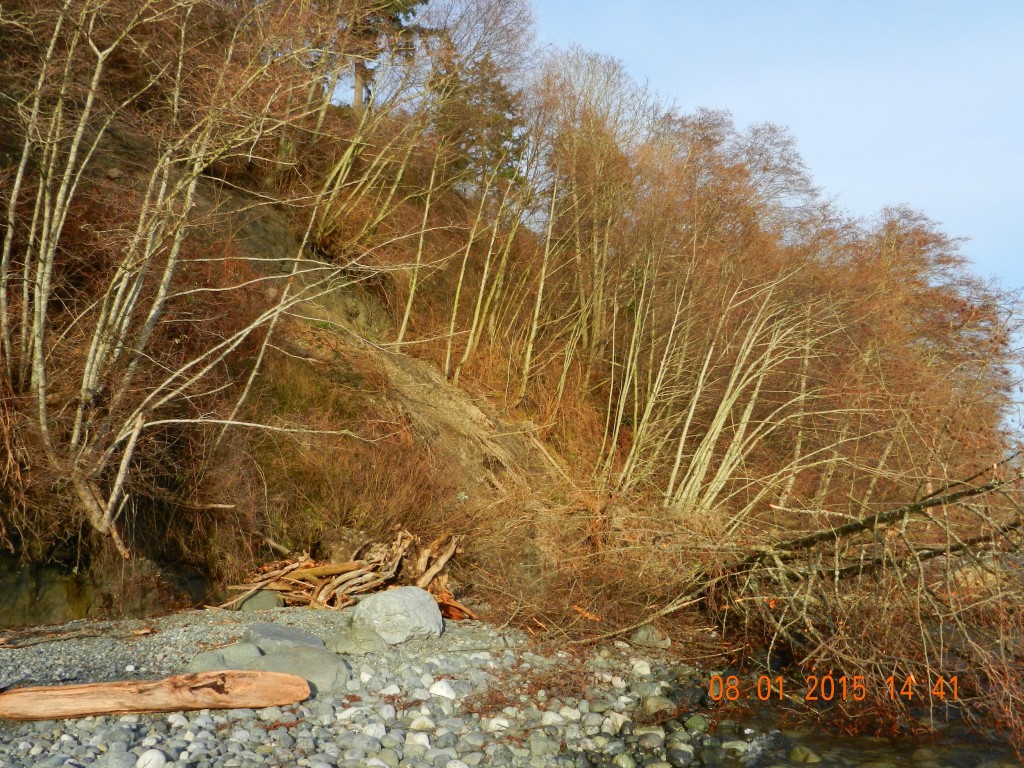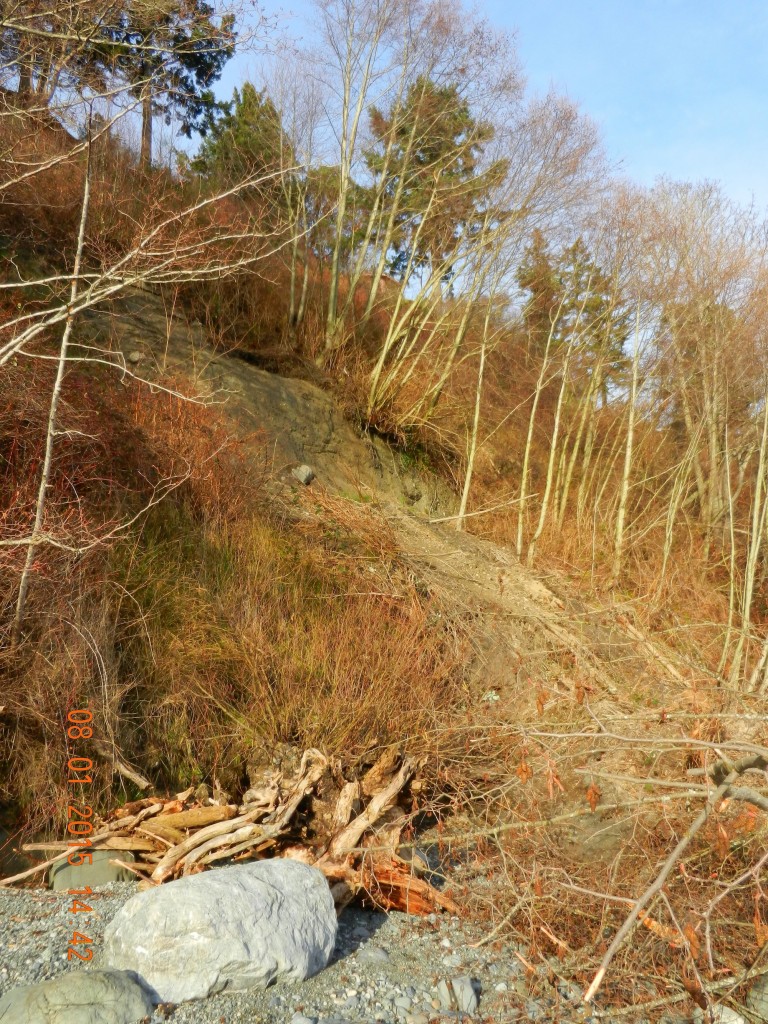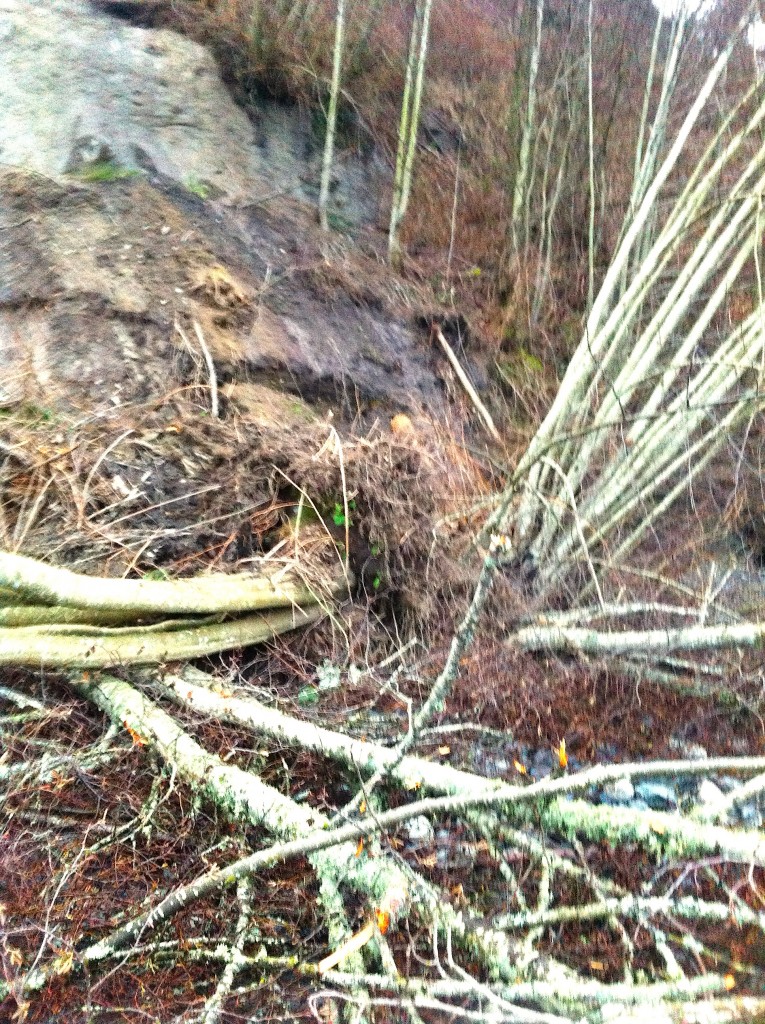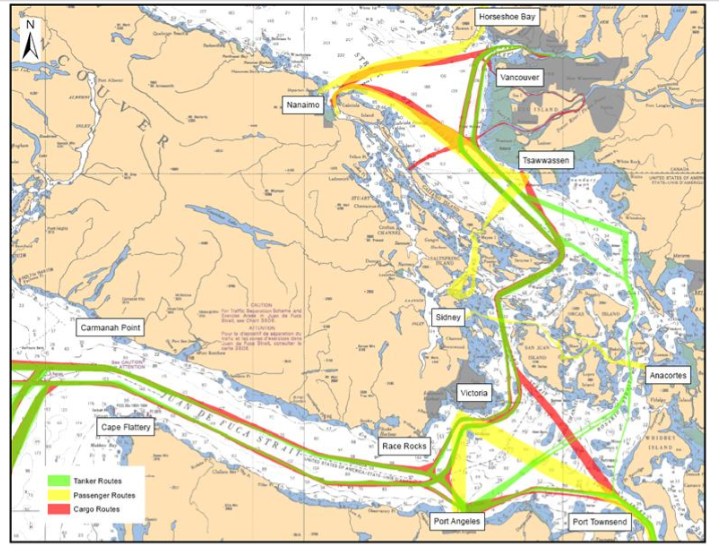
Trans mountain projection of Vessel traffic lanes in the Strait of Georgia and Strait of Juan de Fuca.
Recently, Trans Mountain released a Response to the National Energy Board Information Request , TERMPOL Report and Outstanding Filings from the National Energy Board:
(Def: TRC= TERMPOL Review Committee )
Below are some notes on this document:
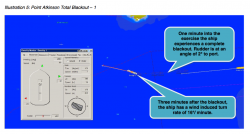 This scenario was modelled to show the results of no tug escort of tankers coming out from the Westridge Terminal in Burnaby |
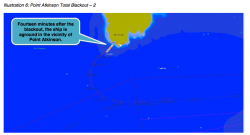 14 minutes after a Blackout of a tanker’s control systems, without s tug escort, it hits the Coast. |
Page 4 of 26
Recommendation 8: Trans Mountain should develop a tug matrix identifying appropriate tug specifications for untethered tug escort of Project tankers for the Strait of Georgia in consultation with the Pacific Pilotage Authority, BC Coast Pilots, and Transport Canada.
As described in response to NEB IR No. 1.59a (A3W9H8), Trans Mountain will make it a requirement of acceptance for tankers nominated to load at Westridge to have a suitable arrangement for the proposed enhanced tug escort. Trans Mountain will develop a tug matrix for inclusion as part of its Tanker Acceptance Standard to prescribe minimum tug capabilities required upon departure of the tanker. The tug matrix will define the capabilities and number of tugs required for foreseeable meteorological and ocean conditions and based on tanker and cargo size. The tug matrix will be developed by a qualified third-party consultant, in conjunction with the tug operators and regulatory authorities.
Page 5 of 26 Recommendation 9: Trans Mountain should implement extended untethered escort for outbound laden Project tankers through the Juan de Fuca Strait. (3.2.4 Proposed Risk Mitigation Measures)
TM Remarks,Comments, Actions:
As described in response to NEB IR No. 1.59a (A3W9H8), Trans Mountain will make it a requirement of acceptance for tankers nominated to load at the Westridge Marine Terminal to have a suitable arrangement for the proposed enhanced tug escort during its outbound transit through the Juan de Fuca Strait in accordance with the tug matrix developed in Recommendation 8. Tankers that do not commit to tug escort in the Juan de Fuca Strait during their laden passage shall be denied their approval to load at the Westridge Marine Terminal.
Recommendation 10: Should Trans Mountain revise its tanker acceptance process to require untethered tug escort of Project tankers through the Juan de Fuca Strait, it should develop a tug matrix identifying appropriate tug specifications in consultation with the Pacific Pilotage Authority and Transport Canada.
Response:Agreed. Please see comments above regarding Recommendation 8
Page 10 of 26
Finding 18: The TRC supports extending the pilot disembarkation zone and tethered tug escort requirements for Project tankers to an area in the vicinity of Race Rocks, weather permitting and subject to the requirements identified in a Pacific Pilotage Authority ‘Notice to Industry’. (3.2.4 Proposed Risk Mitigation Measures)
Accepted.
Trans Mountain is pleased with the TRC’s support for extending the pilot disembarkation zone and tethered tug escort requirements for Project tankers to an area in the vicinity of Race Rocks, weather permitting and subject to the requirements identified in a future Pacific Pilotage Authority ‘Notice to Industry’.
Page 16 of 26
c) TERMPOL Submission
In its Application Trans Mountain had included information from the quantitative risk assessment carried out by DNV, which was also submitted to TERMPOL for the committee’s review. Volume 8C, TERMPOL 3.15 (General Risk Analysis and Intended Methods of Reducing Risks, Trans Mountain Expansion Project, A3S5F4, A3S5F6, A3S5F8).
While the TERMPOL submission had proposed a number of enhanced laden tanker risk reduction measures for consideration (TERMPOL 3.15, Chapter 7), only two in-transit measures were included in the detailed quantification of probabilities (TERMPOL 3.15, Chapter 10), these were: · Extending tug escort for the laden tanker to areas of the route that currently do not require such escort (TERMPOL 3.15, Chapter 7.3.1); · Implementing a laden tanker Moving Exclusion Zone (MEZ) (TERMPOL 3.15, Chapter 7.3.2). Comparison of oil spill probabilities utilized a comparison of three primary scenarios of traffic and enhanced risk reduction measures. These were: Case 0: Forecast traffic in 2018 without TMEP (60 Trans Mountain tankers)
Case 1: Forecast traffic in 2018 with TMEP (408 Trans Mountain tankers)
Case 1b: Same as Case 1 but with expanded tug escort and moving exclusion zone for loaded Trans Mountain tankers.
TERMPOL Review Committee Report
The MEZ was intended as a means to further reduce collision probability through enhanced situational awareness of both the tanker and surrounding vessels. The TRC did not endorse the MEZ concept in the manner proposed in the TERMPOL submission because the TRC has determined that current regulations including ColRegs, Pilotage, and VTS are adequate and no further regulatory change was necessary to accommodate the Project.
In its report the TERMPOL Review Committee endorsed the following enhanced risk control recommendations for in-transit laden tankers: Extended use of tethered and untethered tug escort; as shown in figures 1 and 2 below.
(Recommendations 8, 9, 10 and Finding 17); · Extension of the pilot disembarkation zone (Finding 18);
Page 17 of 26
Refinements from First Round IRs
In response to intervenor requests in the first round of IRs, further assessment of risk and risk controls was conducted resulting in the refinement of the values presented in the TERMPOL submission. Specifically these IR responses were: Research by DNV into the area VTS (Evaluation of VTS Capabilities for TERMPOL 3.15,
Trans Mountain Pipeline ULC, 15 August 2014) determined that VTS capability was far more than what had been modeled. (A4A2Z7, A4A2Z8)
· Fast time simulation study of tanker drift in Juan de Fuca Strait (Maneuvering Assessment – Juan de Fuca Strait Proposed Tug Escort). (A4A7R1)
Strait of Georgia proposed tug escort simulation study (Lantec, 2014). This and the previous study were carried out and provided to the TRC upon their request.
· Detailed assessment of collision risk in Segment 2 (Burrard Inlet); see response to PMV IR No. 1.8.1 (A3X6V4).
· Upgraded the bollard pull of tugs used in the model (40 tonnes to 70 tonnes), which better reflects the tugs available in the region for escorting laden tankers as shown in Page 19 of 26:
Thus the fundamental conclusion submitted in the Application does not change; that is, that the existing marine network is well managed and safe and has the capacity to safely accommodate Project tankers with application of agreed risk mitigation measures and that oil cargo spill risk in the region will remain similar and comparable with current conditions.
Page 22 of 26
statement after the two pink maps:
References:
The Effect of Enhanced Situational Awareness on Collision Risk, Technical Note, November 2014 (DNV GL).
Strait of Georgia Proposed Tug Escort Simulation Study (Lantec, 2014)




